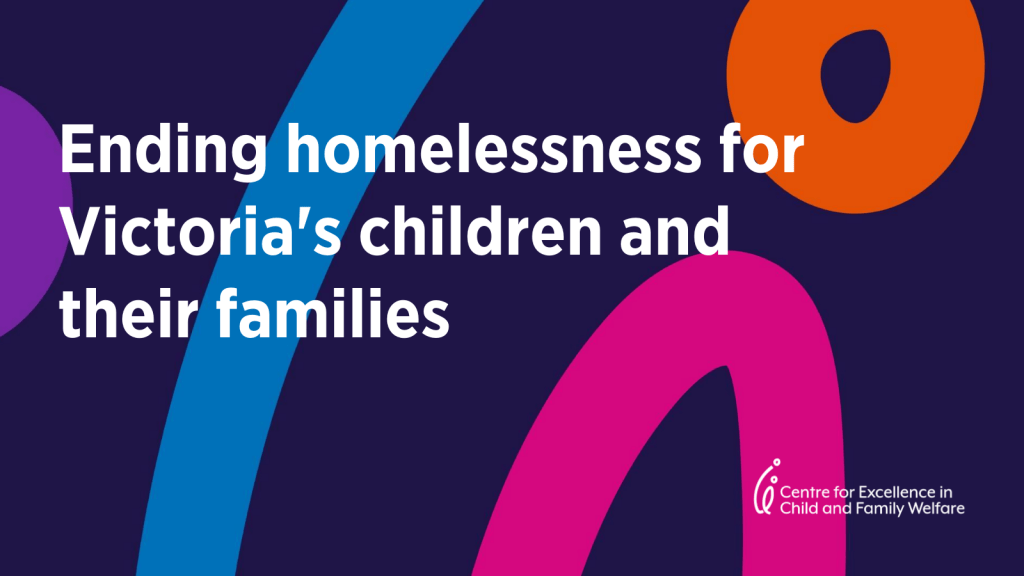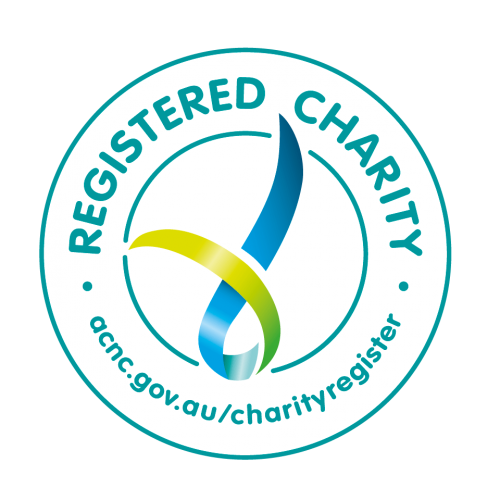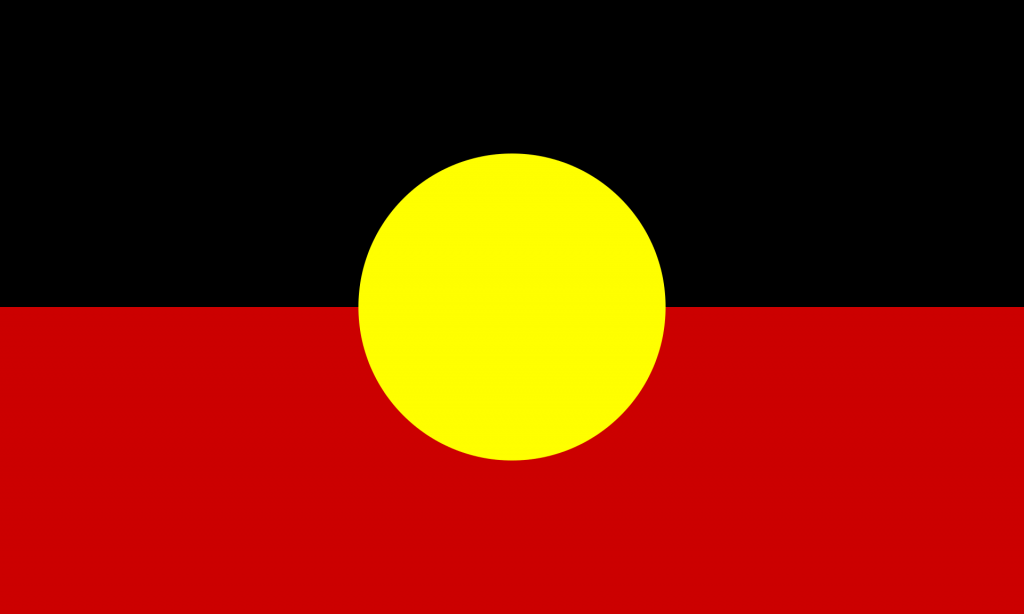- 26,918 children had contact with Victorian homelessness services in 2018-19, accounting for almost 1 in every 4 people seeking assistance
- 22 per cent of people experiencing homelessness in Victoria at the 2016 census are children
- Family violence is the leading cause of homelessness for children and women in Victoria
This week we mark Homelessness Week, a week to bring attention to the increasing number of Australians experiencing homelessness and to call on government to implement the solutions to this crisis.
For an increasing number of families in contact with child and family services, housing insecurity and homelessness are their primary concern. This presents a significant challenge, as the supports our sector is best placed to provide are often impossible to deliver when a family does not have a safe, secure and stable place to live.
According to The State of Victoria’s Children Report:
From 2011-12 to 2016-17, the number of Victorian children accessing homelessness services increased by 56 per cent. This was driven by a 65 per cent increase in children aged zero to nine years and a 76 per cent increase in children aged 10 to 14 years … with … groups such as those experiencing family violence and children in out-of-home care significantly overrepresented.
The increased number of children and families accessing these services points to broader systemic issues that need to be addressed urgently to turn this trend around and uphold the rights of Victorian children to be safe and secure.
Housing supply
There are not enough social housing properties to meet demand in Victoria. Supply of social housing has been declining over time as a proportion of total housing supply and Victoria now has the lowest per capita rate of social housing in the country. Analysis of research from the Australian Housing and Urban Research Institute (AHURI) by the Everybody’s Home campaign shows that the social housing shortfall for Victoria is 102,800 properties, and that an additional 166,000 properties will be needed by 2036.
Investment in housing supply is the most effective step government can take to address homelessness and is urgently required to meet the most basic safety and wellbeing needs of children and families. Investing in social housing would not only drive social outcomes, but would stimulate the economy, supporting recovery and creating jobs in the wake of the coronavirus pandemic. With unemployment high and job recovery likely to be slow, affordable housing will be critical to ensuring that housing outcomes do not further decline.
Family violence
Family violence is the leading cause of homelessness for women and children in Victoria. In 2018-19, 49,405 Victorians accessed Specialist Homelessness Services due to family violence and for 38,540 this was a main reason for seeking support. The Victorian Government must continue to build on the momentum and investment generated by the Royal Commission into Family Violence and deliver on their commitment to build more social housing to address homelessness driven by family violence.
Care leavers
We must interrupt the trajectory that sees too many young people homeless after leaving the care of the state. In 2018-19, 507 Victorian young people transitioning from foster or residential care sought help from Specialist Homelessness Services.
Extending the leaving care age from 18 to 21 years and providing leaving care supports to young people in out-of-home care provides a proven solution to reducing youth homelessness. In the US and the UK, where the leaving care age was increased to 21 years of age, youth homelessness for this group was halved.
Social security
Poverty is a known contributor to homelessness, yet the rate of social security payments including Newstart and Youth Allowance remain below the poverty line.
Before the pandemic, 774,000 children were living in poverty. In response to the impacts of COVID-19, the Australian Government provided a much needed, albeit temporary boost to social security payments of $550 per fortnight. A survey by ACOSS showed that this support made it easier for 65 per cent of respondents to pay rent or move to safer accommodation. But just last week, the government announced that this vital support will be cut by $300 per fortnight in September, a move that will push 29,000 Victorian children into poverty.
While more social housing is crucial to addressing homelessness, families also need immediate relief to keep a roof over their heads and meet the needs of children. That’s why we are calling on the Australian Government to deliver a permanent increase to social security payments sufficient to lift people above the poverty line and calling on the Victorian Government to join us in lobbying for this change.
Inquiry into homelessness in Victoria
The Legislative Council’s Legal and Social Issues Standing Committee is currently conducting an inquiry into homelessness in Victoria to understand the changing nature of homelessness in Victoria and identify policies and practices to end homelessness for all Victorians. In our submission to the inquiry, the Centre calls on government to prioritise children in responses to homelessness.
Our recommendations for the Victorian Government:
- As recommended by the Council to Homeless Persons, invest in building 6,000 new social housing properties each year over ten years to achieve real impact in homelessness reduction.
- Lobby the Australian Government to improve rental affordability by increasing Commonwealth Rent Assistance by 30 per cent, assisting low income families to maintain rental accommodation.
- Lobby the Australian Government to reduce the risk of homelessness by immediately increasing the rate of Newstart, Youth Allowance and related payments by a minimum of $95 per week, without conditions.
- Lobby the Australian Government to reduce the rate of poverty and risk of homelessness for children and their families by:
- Reversing the 2007 eligibility changes to Parenting Payment that saw the age of the youngest child reduced to eight years, and
- Abolishing the use of punitive compliance mechanisms, including payment suspensions.
- Lobby the Australian Government to reverse cuts to the Status Resolution Support Service (SRSS) so that people who are refugees or seeking asylum have the financial resources they need to access safe, stable and secure accommodation.
- Continue to provide interim state funding to make sure that people who are refugees or seeking asylum have their housing needs met.
- Give every Victorian young person leaving care the support they need to secure a place to live, and prevent a trajectory into homelessness by:
- Providing the option to continue care until the age of 21 years, and introducing this into legislation
- Investing an additional $25 million in Home Stretch on top of already committed funding over four years from 2020-21
- Providing a housing guarantee that includes access to a range of housing and support options to meet individual needs for all young people leaving the care system.
- Fund positions for child and family services and homelessness services workers to have a physical presence across primary and secondary schools in areas of greatest need to build relationships and engage with young people, provide information about available supports and deliver services when needed.
- The Committee work with the Royal Commission into Victoria’s Mental Health System to develop housing recommendations for the Victorian Government in relation to a range of safe, sustainable and secure housing and support options for people experiencing mental health challenges.
Read our full submission to the inquiry here.
Download our homelessness factsheet here.
Download and share our Homelessness Week social media tiles.
Learn more about the inquiry here.
Learn more about the Everybody’s Home campaign here.






